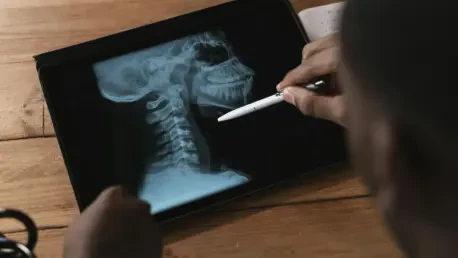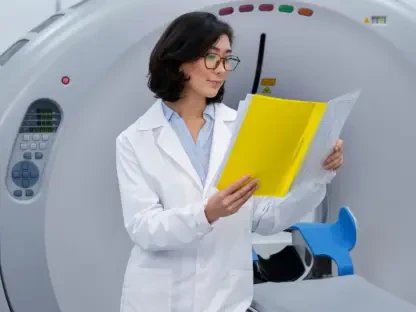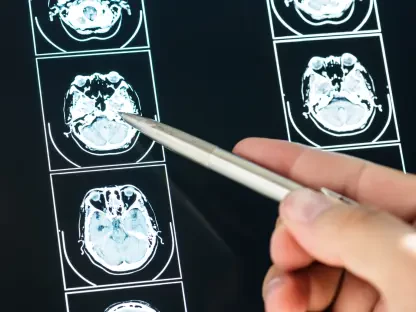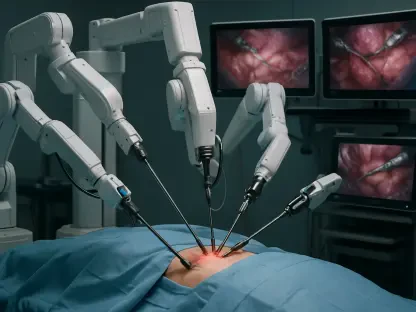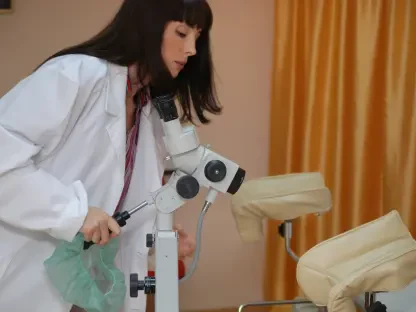Imagine a world where the silent threat of osteoporosis, a condition that weakens bones and heightens fracture risk, can be detected and managed before a devastating break occurs, transforming the lives of millions. In the United States alone, the Bone Health and Osteoporosis Foundation estimates that around ten million individuals are already diagnosed with osteoporosis, while an additional 44 million grapple with low bone density, placing them on a precarious edge. This staggering reality highlights a critical public health challenge that demands innovative solutions. Enter OsteoProbe, a groundbreaking device recently granted 510(k) clearance by the US Food and Drug Administration (FDA). Developed by Active Life Scientific, this tool introduces a new era in bone health assessment by directly measuring the Bone Material Strength index (BMSi), a vital indicator of bone strength. Its arrival signals a transformative shift, offering clinicians a minimally invasive way to evaluate bone quality and address risks early, potentially altering the trajectory for millions vulnerable to fractures.
A New Frontier in Bone Diagnostics
The significance of OsteoProbe lies in its ability to fill a crucial gap in current diagnostic methods for bone health. Traditional assessments often rely on bone mineral density (BMD) scans, which, while useful, do not fully capture the structural integrity or material strength of bone tissue. OsteoProbe changes this dynamic by providing a direct measurement of BMSi, offering deeper insight into how bones withstand stress and resist fractures. This is particularly vital for high-risk areas such as the hip, spine, and wrist, where breaks can lead to severe mobility issues and long-term health complications. Supported by research funded by the National Institutes of Health (NIH), studies have confirmed a strong correlation between BMSi readings from OsteoProbe and actual bone strength tested in laboratory settings. This validation positions the device as a reliable tool that enhances the precision of diagnosing conditions like osteoporosis, empowering healthcare providers to make more informed decisions about patient care.
Beyond its technical innovation, OsteoProbe stands out for its practical application in clinical environments. The device is designed for simplicity, allowing measurements to be taken in a point-of-care setting without the need for complex or invasive procedures. This accessibility means that patients can receive critical assessments during routine visits, facilitating earlier identification of those at risk for fractures. Such early detection is a game-changer, as it enables timely interventions—whether through lifestyle adjustments, medications, or other therapies—that can strengthen bones before a catastrophic event occurs. Furthermore, the ability to integrate this tool into everyday medical practice addresses a longstanding barrier in bone health management: the delay between symptom recognition and diagnosis. By streamlining this process, OsteoProbe not only improves patient outcomes but also reduces the economic burden associated with treating advanced bone deterioration and related injuries.
Transforming Patient Care and Outcomes
One of the most promising aspects of OsteoProbe is its potential to personalize treatment plans for individuals with bone health concerns. By delivering precise data on bone material strength, the device equips clinicians with actionable insights tailored to each patient’s unique profile. This marks a departure from one-size-fits-all approaches, allowing for customized strategies that might include specific dietary recommendations, targeted exercise regimens, or pharmaceutical interventions to bolster bone resilience. Alexander Proctor, founder of Active Life Scientific, has emphasized that this capability represents a paradigm shift, moving bone health assessment into a more proactive and individualized realm. For patients, this translates to a higher likelihood of preventing fractures, which often result in prolonged recovery periods, loss of independence, and significant healthcare costs. The focus on personalization underscores a broader movement in medicine toward precision care, with OsteoProbe leading the charge in this specialized field.
Additionally, the broader implications of OsteoProbe’s integration into routine care cannot be overstated. As the device becomes more widely adopted, it could significantly reduce the incidence of fractures among vulnerable populations, particularly older adults who are disproportionately affected by osteoporosis. The ripple effect of such a reduction would extend to healthcare systems, alleviating the strain caused by emergency treatments and long-term rehabilitation for fracture patients. Moreover, the technology aligns with a growing trend of innovation in bone health diagnostics, as evidenced by parallel advancements like AI-driven tools for assessing bone density through standard imaging. While OsteoProbe focuses specifically on material strength, its role within this evolving landscape highlights a collective push toward comprehensive solutions. This synergy of technologies promises a future where bone fragility is no longer a hidden threat but a manageable condition, fundamentally improving quality of life for millions across the nation.
Paving the Way for Future Innovations
Looking back, the journey of OsteoProbe through FDA clearance marked a pivotal moment in the fight against bone-related disorders. Its validation as the first device cleared to measure BMSi set a precedent for how technology could address longstanding challenges in medical diagnostics. Reflecting on its impact, the device proved to be more than just a tool; it became a catalyst for rethinking how bone strength was evaluated in clinical settings. The evidence gathered from extensive studies underscored its accuracy and reliability, paving the way for widespread trust among healthcare professionals. This milestone also sparked discussions on the importance of integrating cutting-edge solutions into everyday practice, ensuring that advancements reached those who needed them most.
Moving forward, the legacy of OsteoProbe suggests several actionable steps for the medical community. Stakeholders should prioritize training programs to equip clinicians with the skills to use such devices effectively, while research efforts must continue to explore complementary technologies that enhance diagnostic capabilities. Additionally, policymakers could consider initiatives to make innovative tools more accessible, especially in underserved regions where osteoporosis rates remain high. By building on the foundation laid by this pioneering device, the focus should shift toward creating a holistic ecosystem of care that prevents, detects, and treats bone fragility with unprecedented precision. This vision offers hope for a future where the burden of fractures is significantly diminished, reflecting a commitment to advancing public health through innovation.
